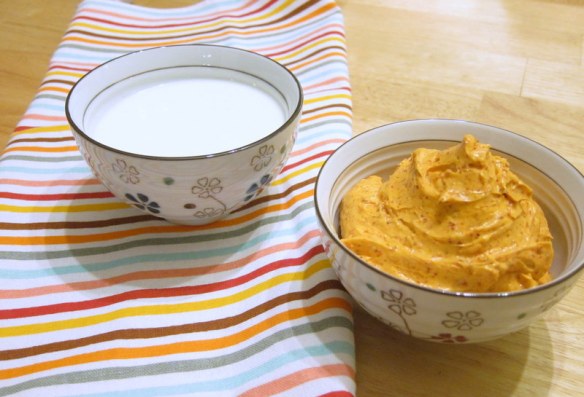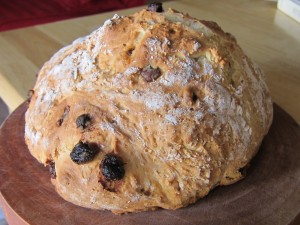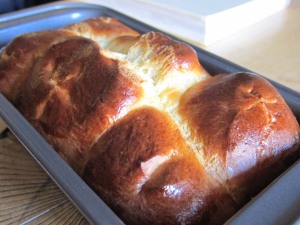 [Homemade buttermilk and butter flavored with piment d’esplette]
[Homemade buttermilk and butter flavored with piment d’esplette]
After learning about buttermilk substitutes, I actually realized that I didn’t know a whole lot anything about buttermilk in the first place (for my French readers, buttermilk is called babeurre, lait battu, petit lait or lait de beurre). So what exactly is buttermilk? Traditional buttermilk refers to the slightly sour left-over liquid from the butter churning process. Hence the name, butter-milk. Contrary to popular belief, buttermilk does not contain butter and is in fact low in fat.
Nowadays, you’ll be hard-pressed to find traditional buttermilk in your regular supermarket. Most often, you’ll see cultured buttermilk, made from adding lactic acid bacteria to pasteurized milk (whole, skim or non-fat) and left to ferment for 12 to 14 hours. The fat content of the buttermilk will usually depend on the fat content of the milk from which it was made.
The good news is, making your own buttermilk the old-fashioned way, and by extension making your own butter, is a breeze. Well, almost. Bear with me. The recipe involves heavy cream, a jar, and a lot of shaking. You put the heavy cream in a jar, close the lid tightly, then shake until the cream turns into whipped cream, then shake some more until the whipped cream separates into a solid, butter, and a liquid, buttermilk. Tada, that is all.




